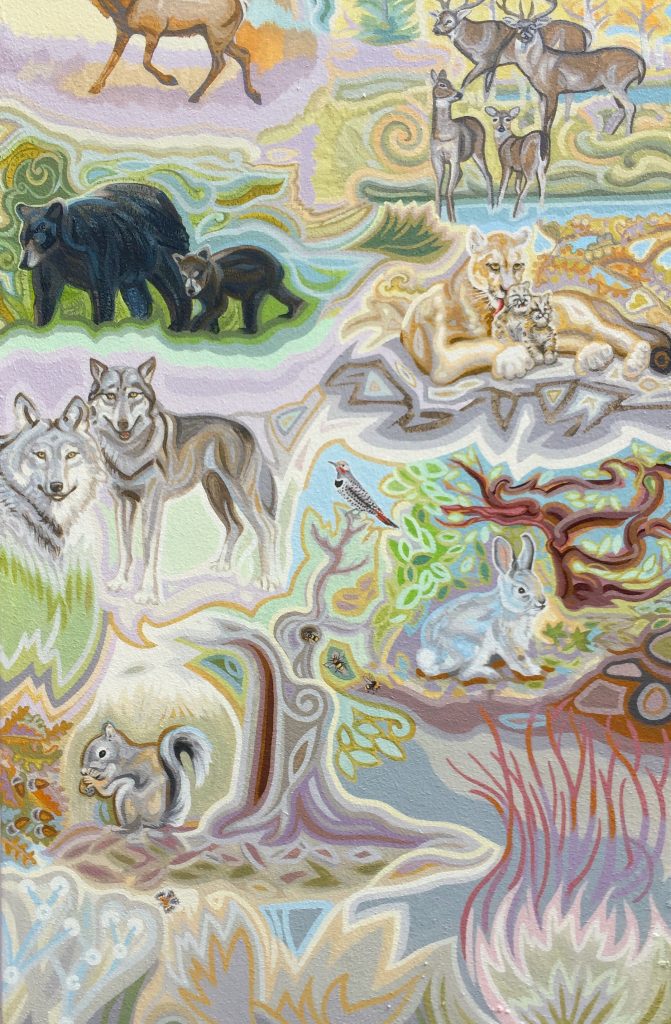
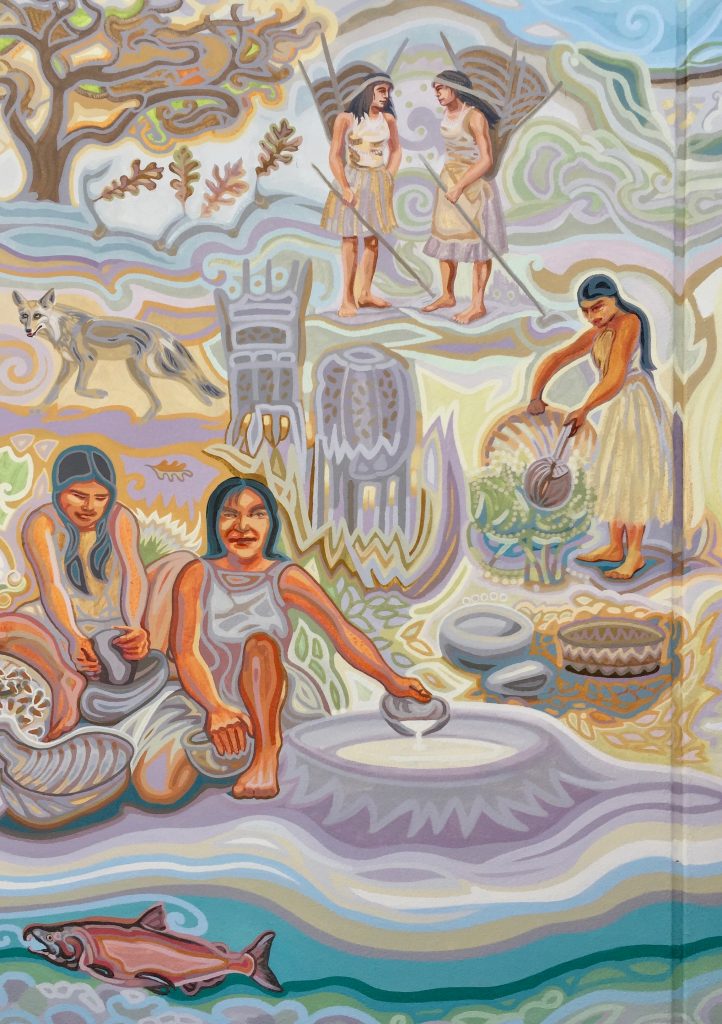
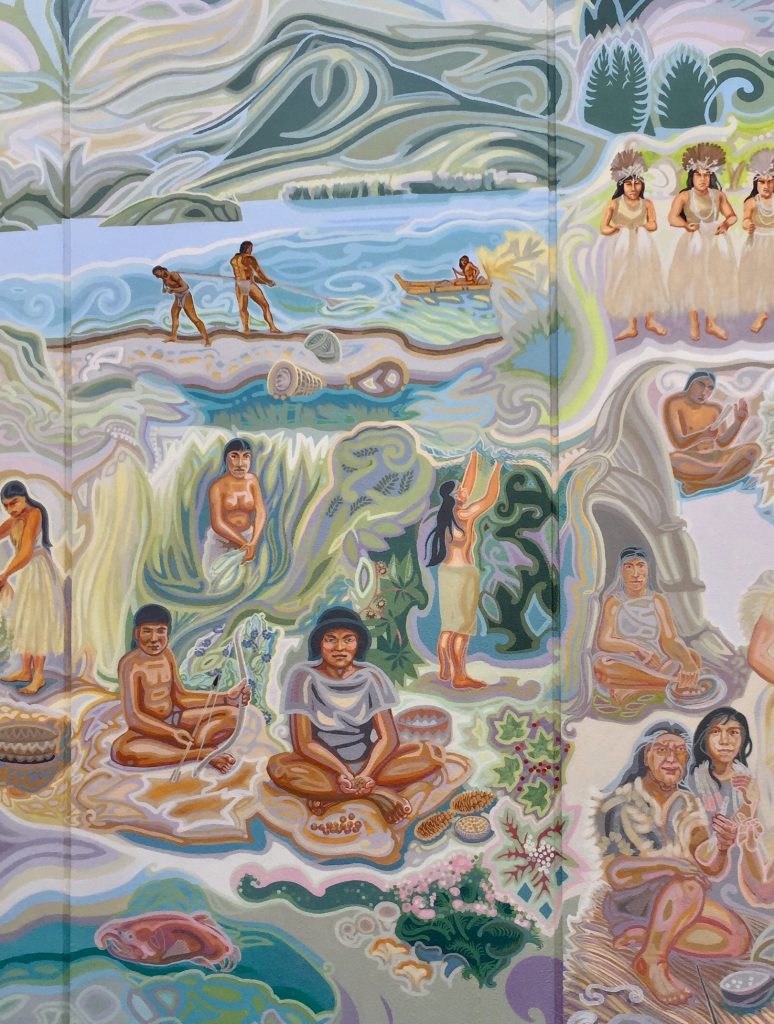
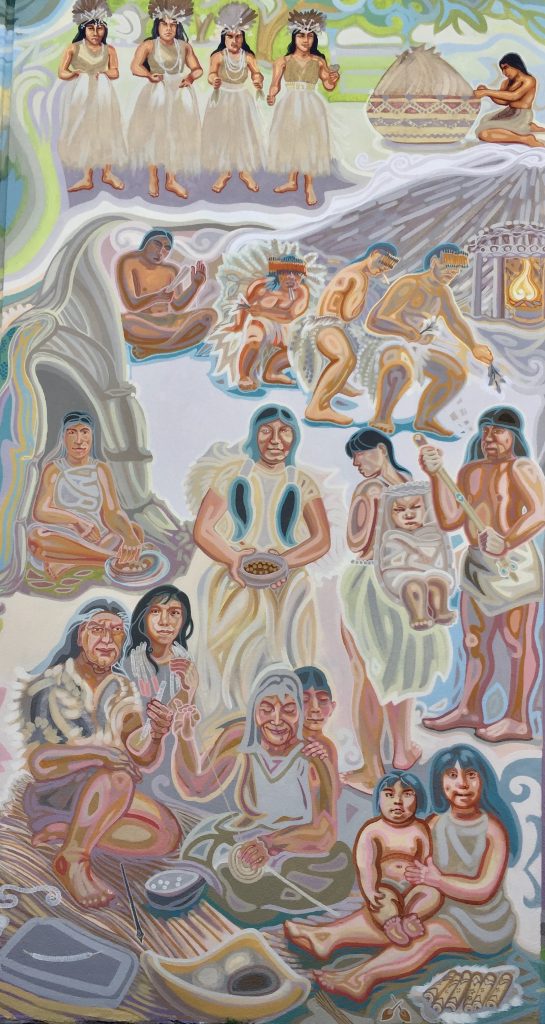
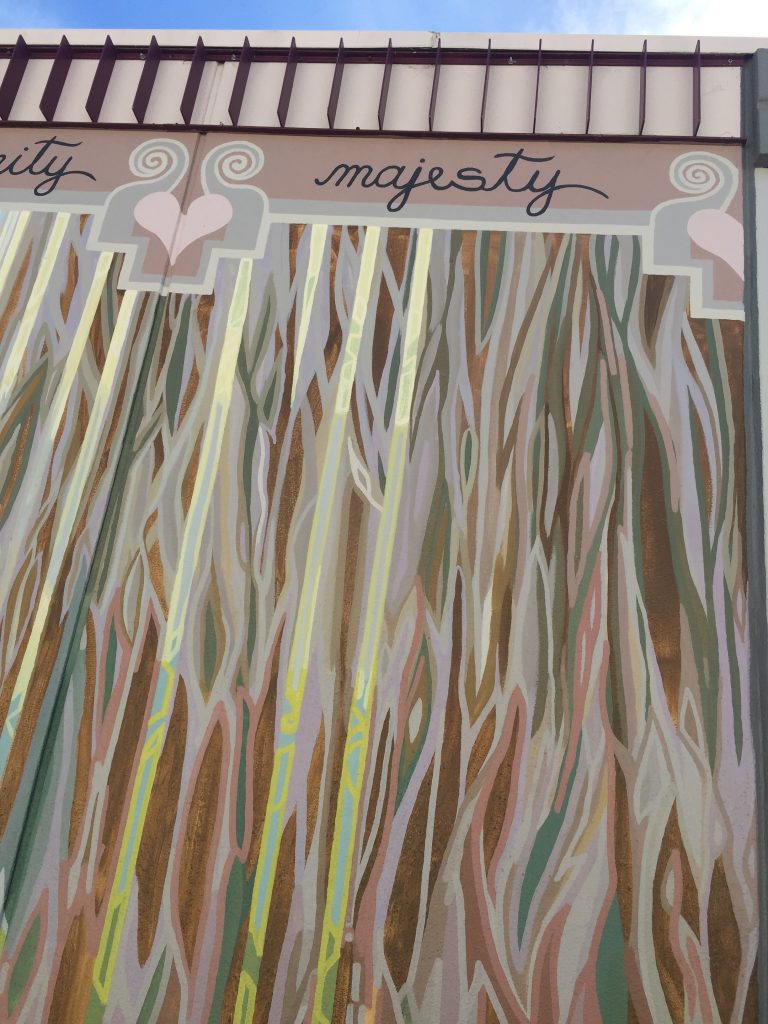
Panel summaries:
Click on the list or scroll down for a quick view.
After each summary, a PANEL BUTTON links to all the stories and portraits of real people in that panel.
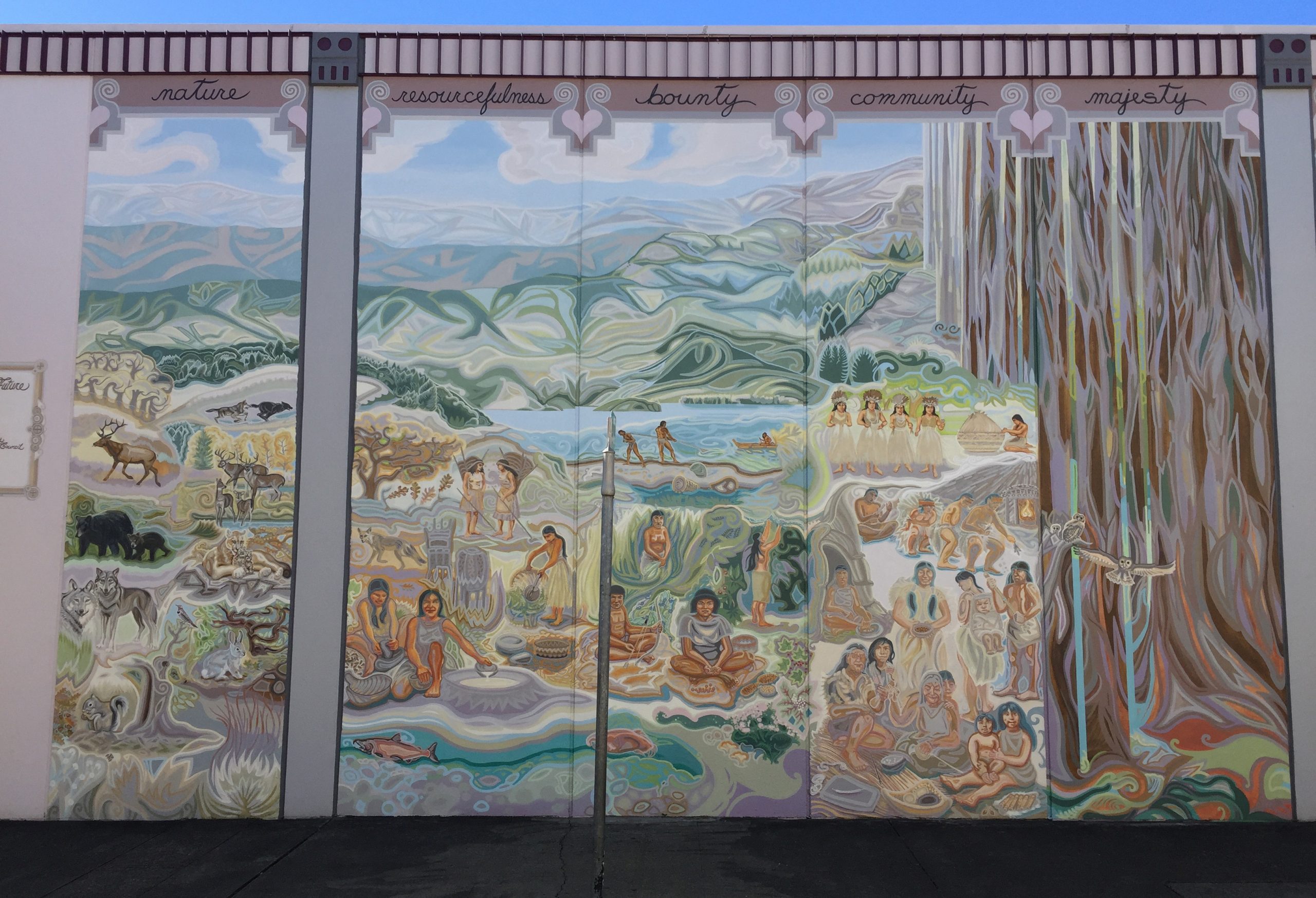
panel 1 nature
The first panel depicts the natural world that existed here for millennia before humans arrived in North America.
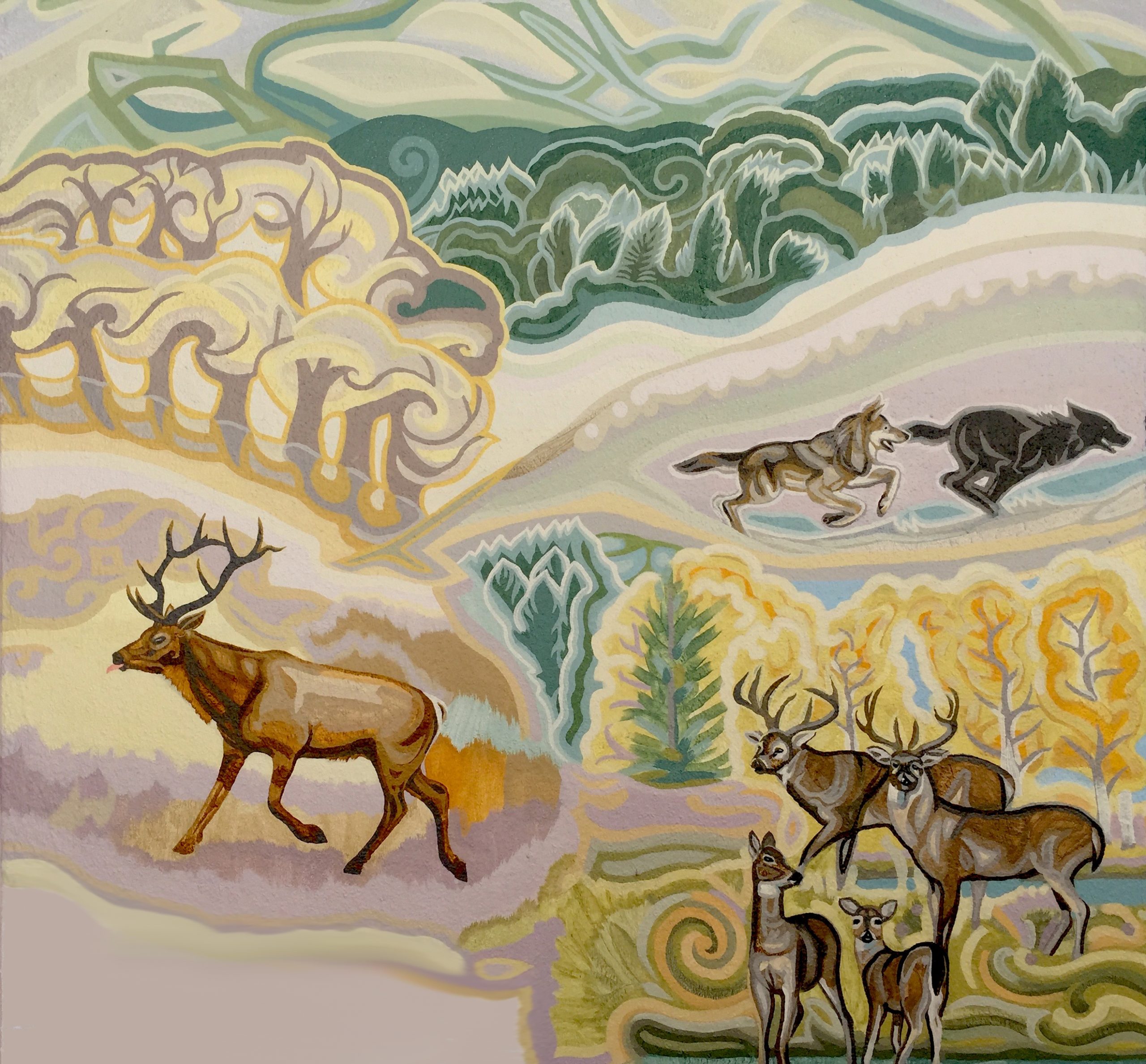
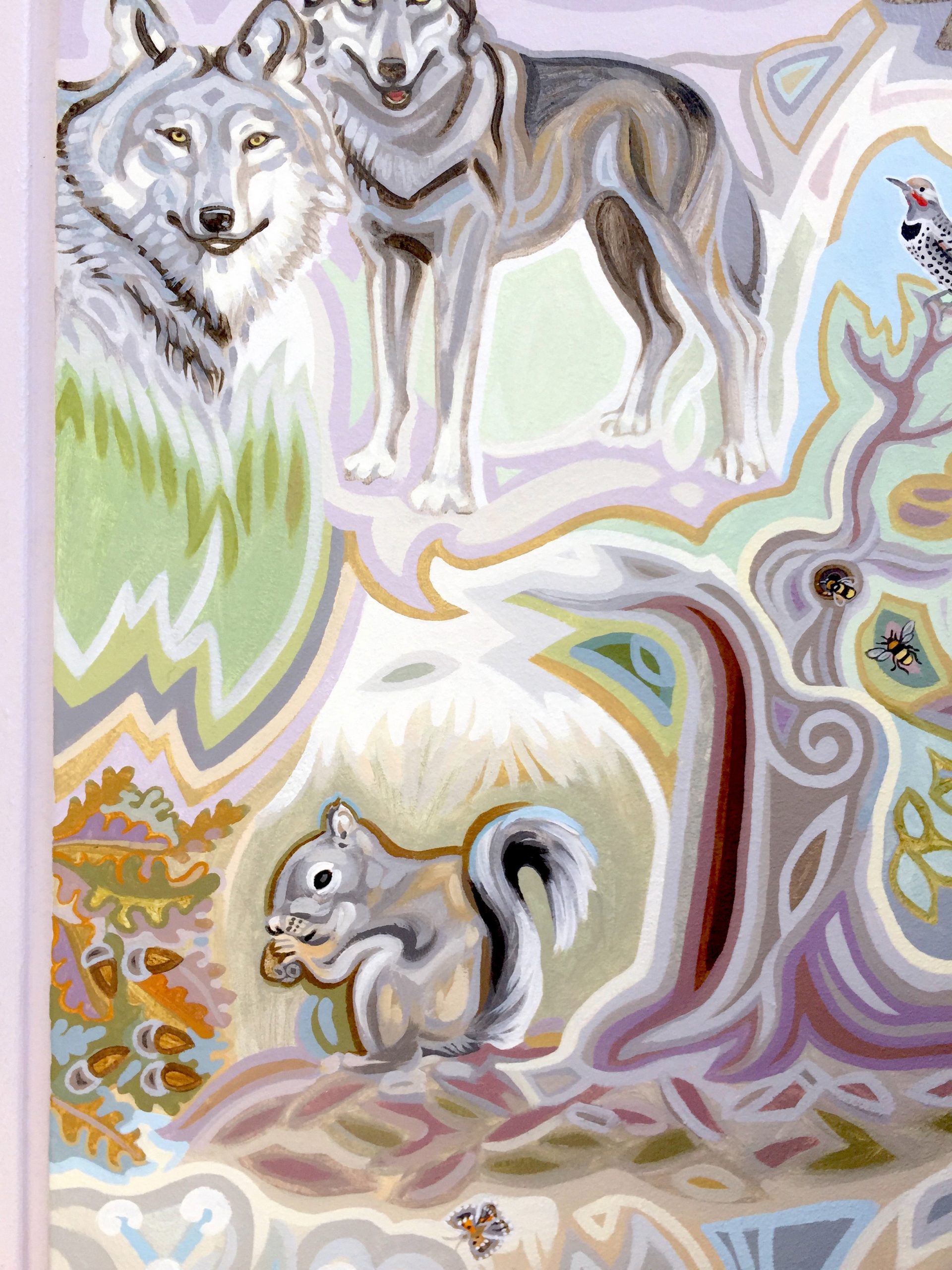
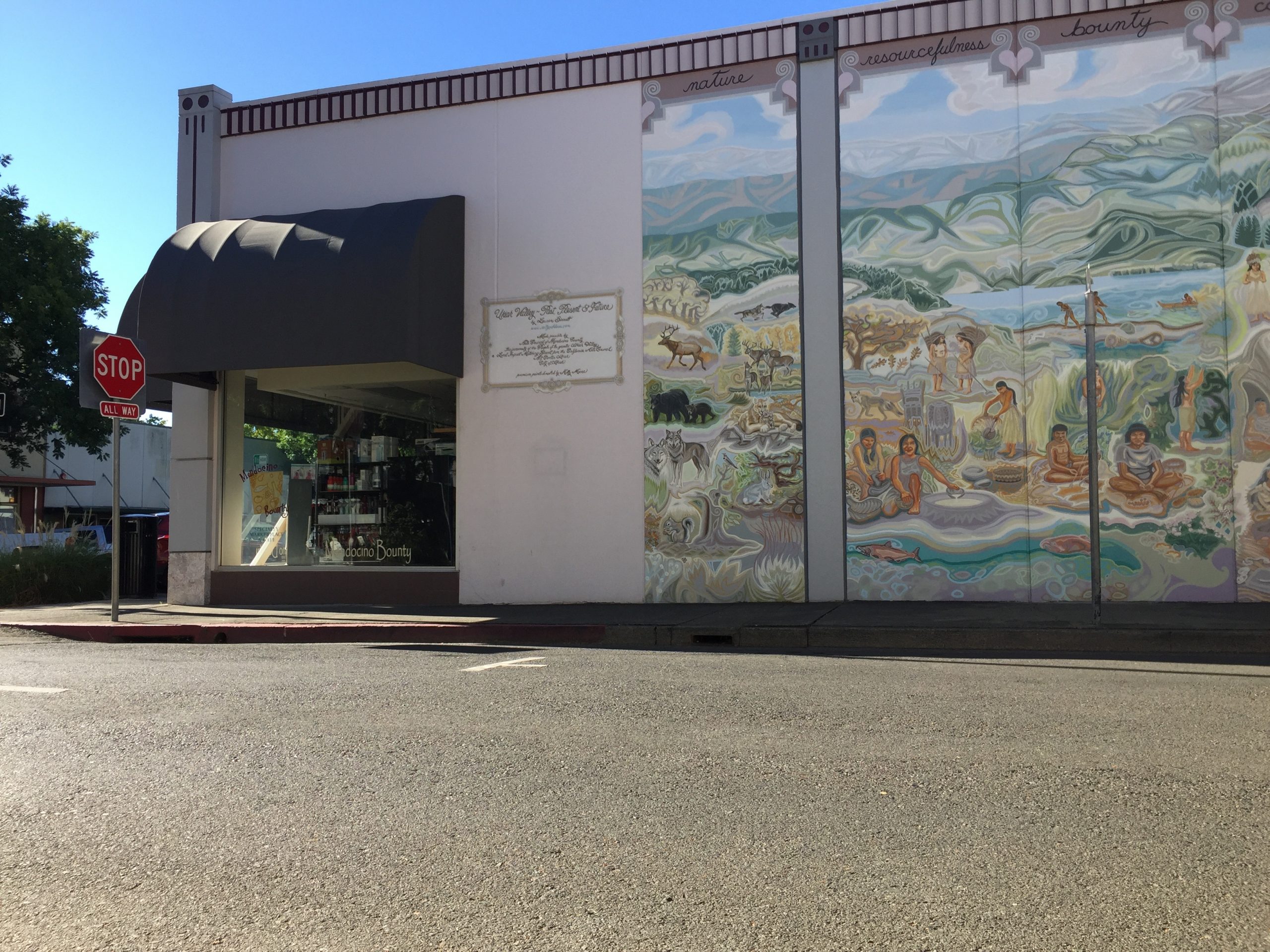
This panel is full of families! There are a black-tailed deer family, a mother black bear and cub, a mother mountain lion with two kittens, two more wolves close up with their faces as expressive as those of people.
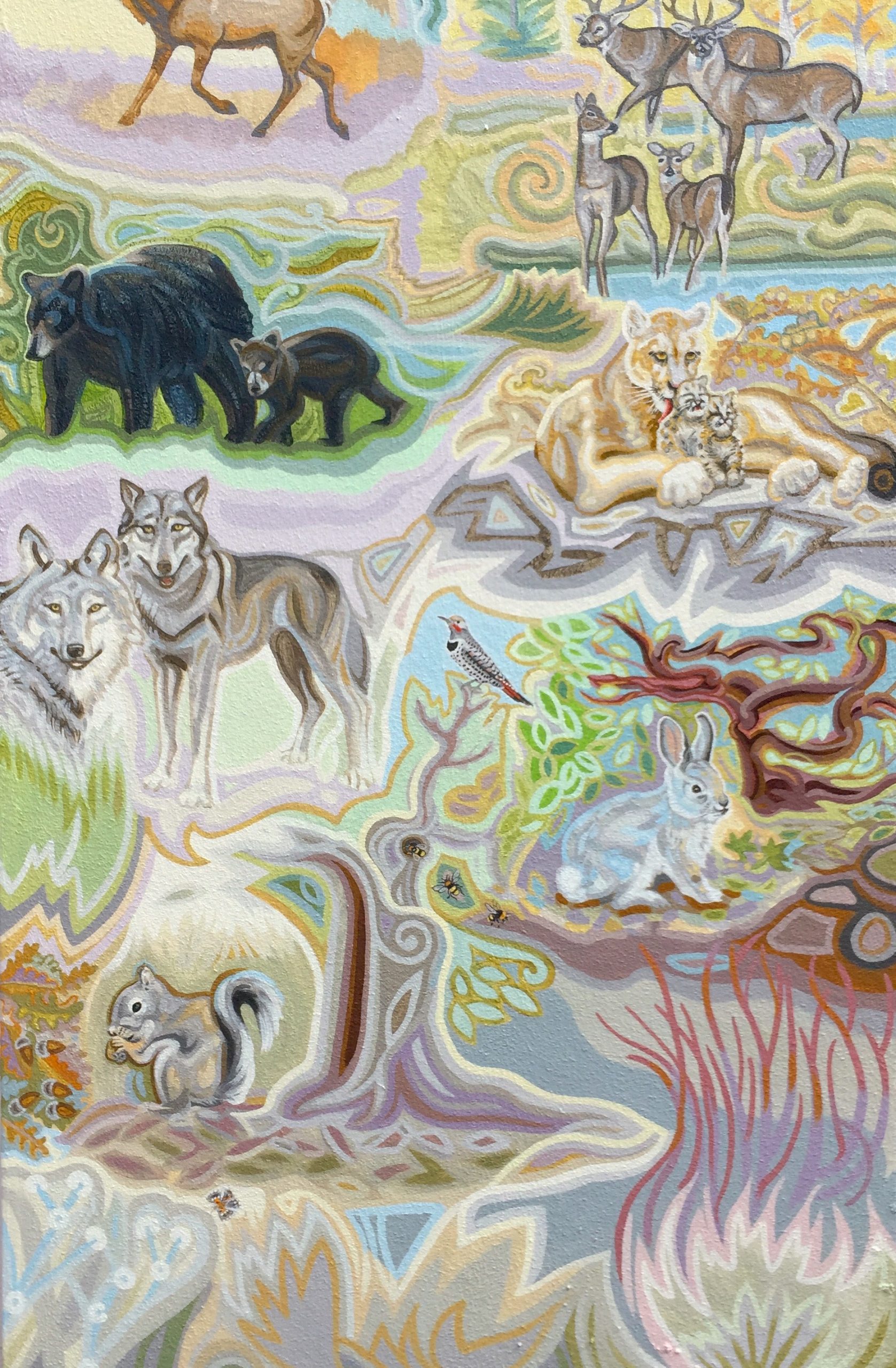
Smaller native animals in the foreground engage the viewer, especially kids viewing at that level: a gray squirrel with a nut and acorns nearby, a watchful brush rabbit, a flicker, bees living in a dead tree branch, and a butterfly.

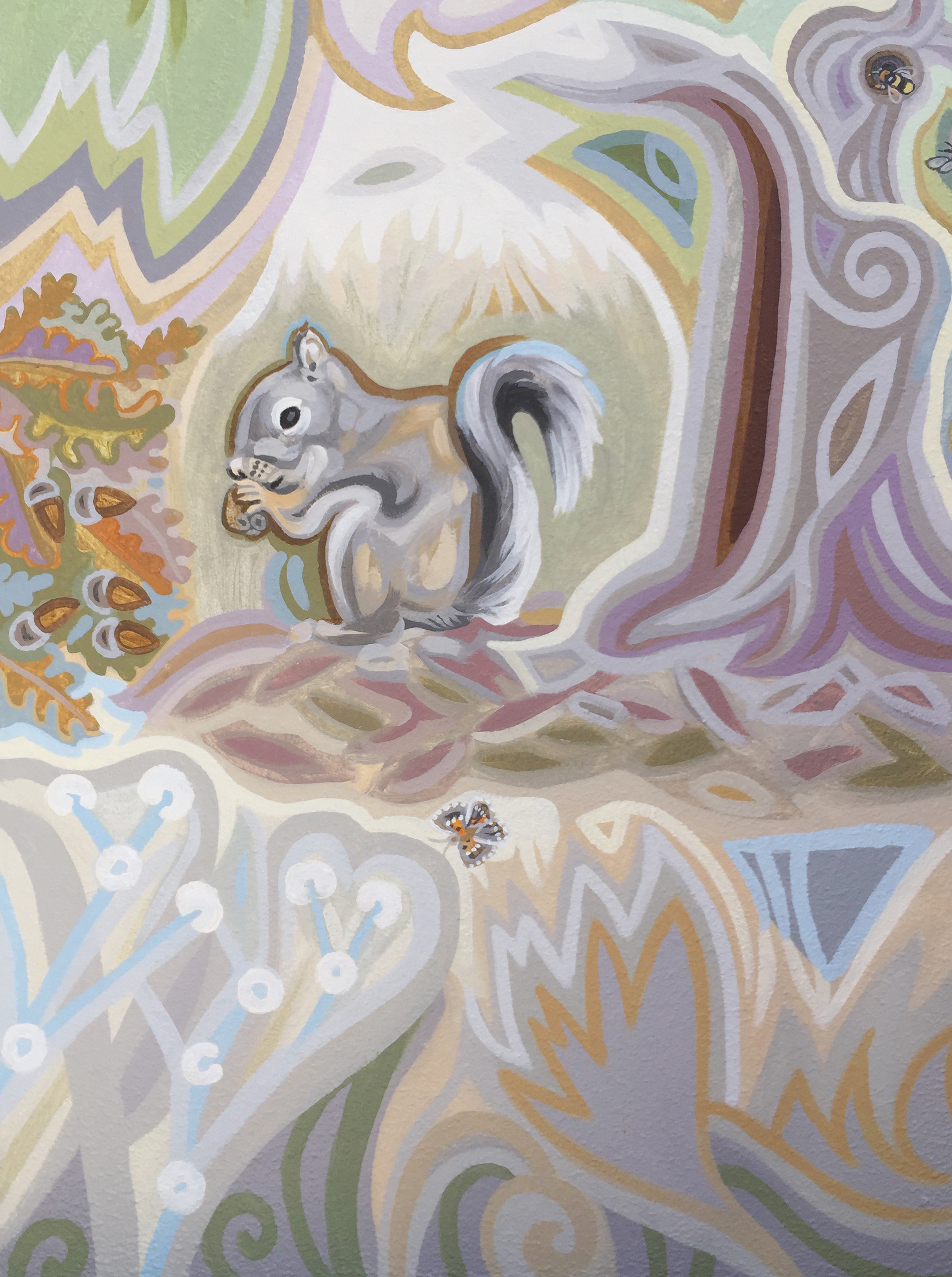

Our hemisphere was a rich and diverse environment for millennia, only inhabited by humans late in the game.*
Find all the creatures on the panel page:
*Humans crossed the Bering Strait into North America probably about 15,000 years ago. By contrast, humans evolved in Africa by 200,000 years ago and began moving into Asia and Europe by about 60,000 years ago.
In the next twenty-five panels, the stars of the show are its people, on the beautiful stage of nature.
panel 2 resourcefulness
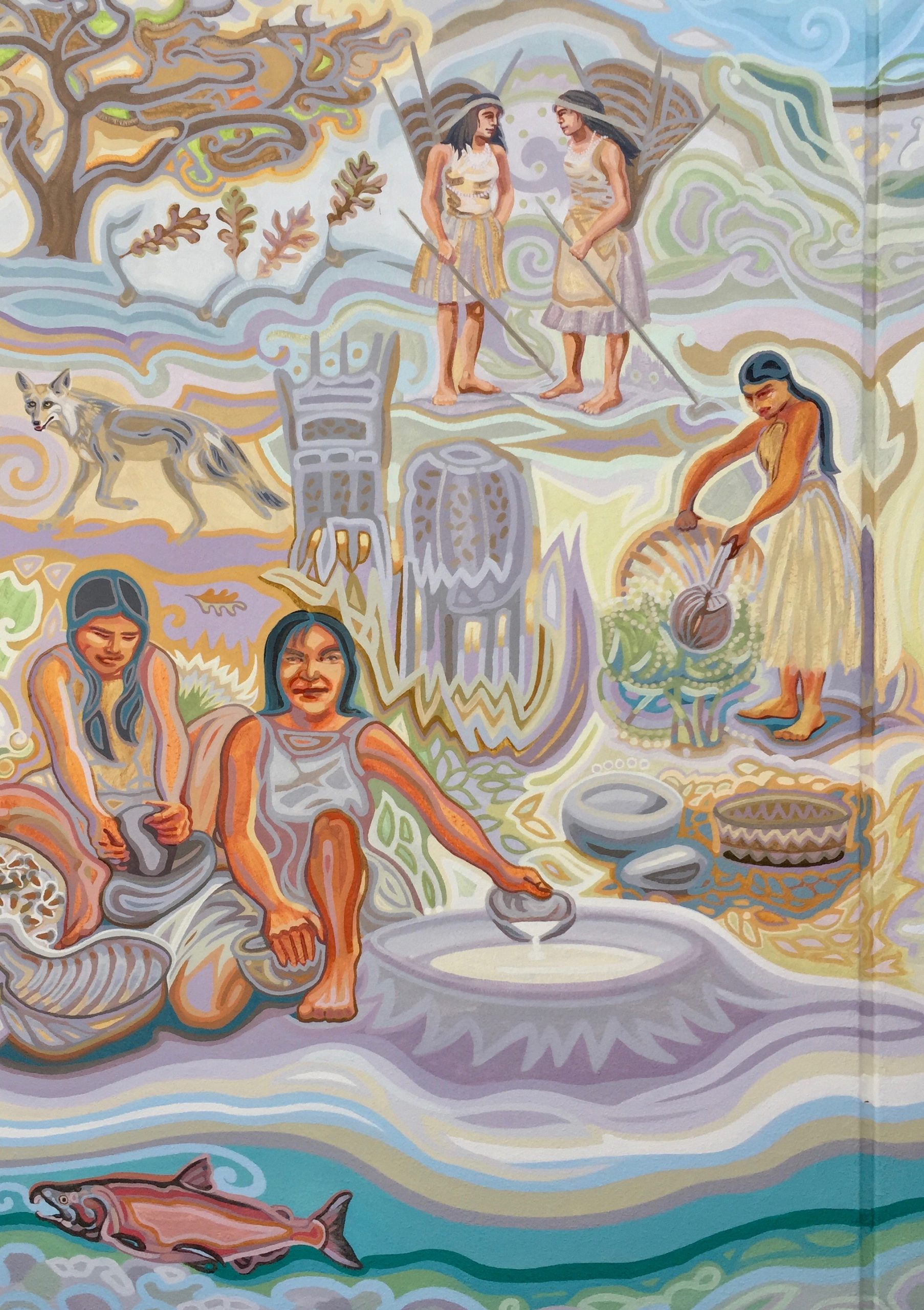
This story of millennia continues across the next four panels depicting the indigenous tribes and the life they led in their “deep or southern valley,” giving us the word Yokaya, and the contemporary name Ukiah. Native people flourished here for more than 10,000 years, developing a sustainable and efficient lifestyle.
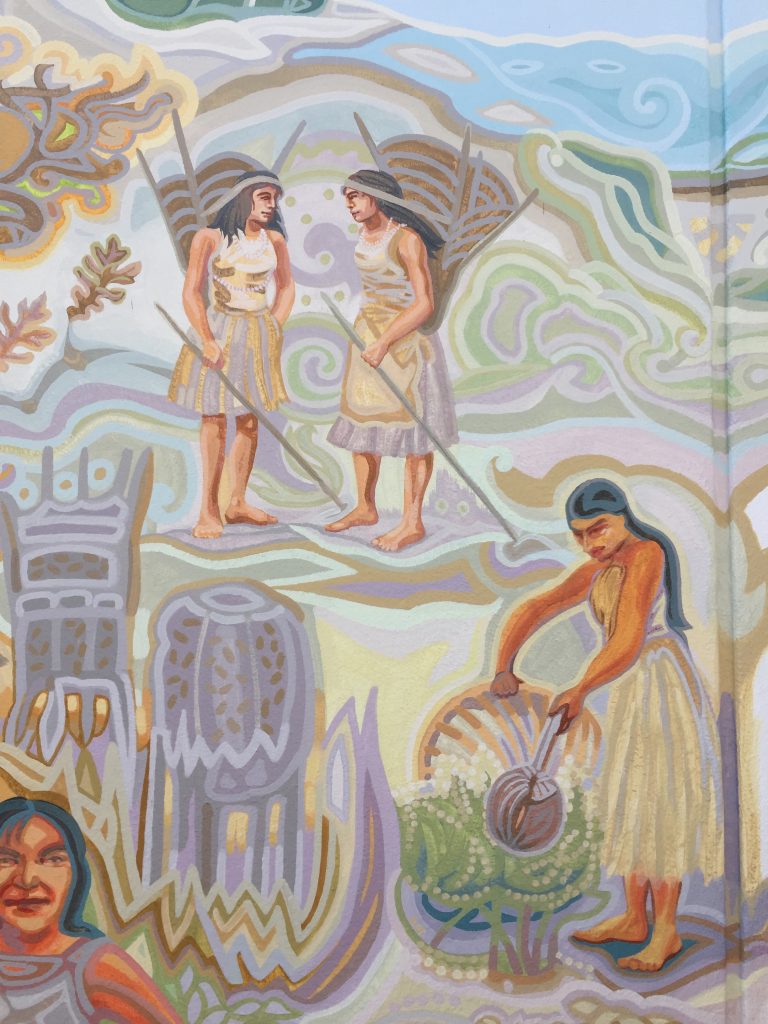
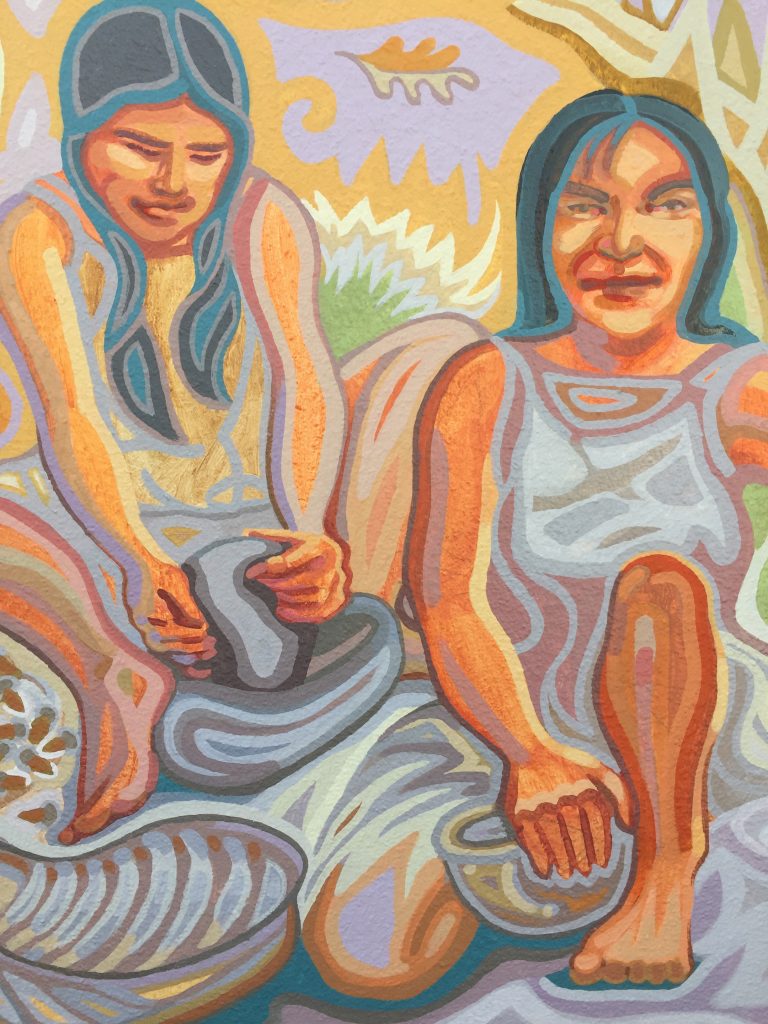
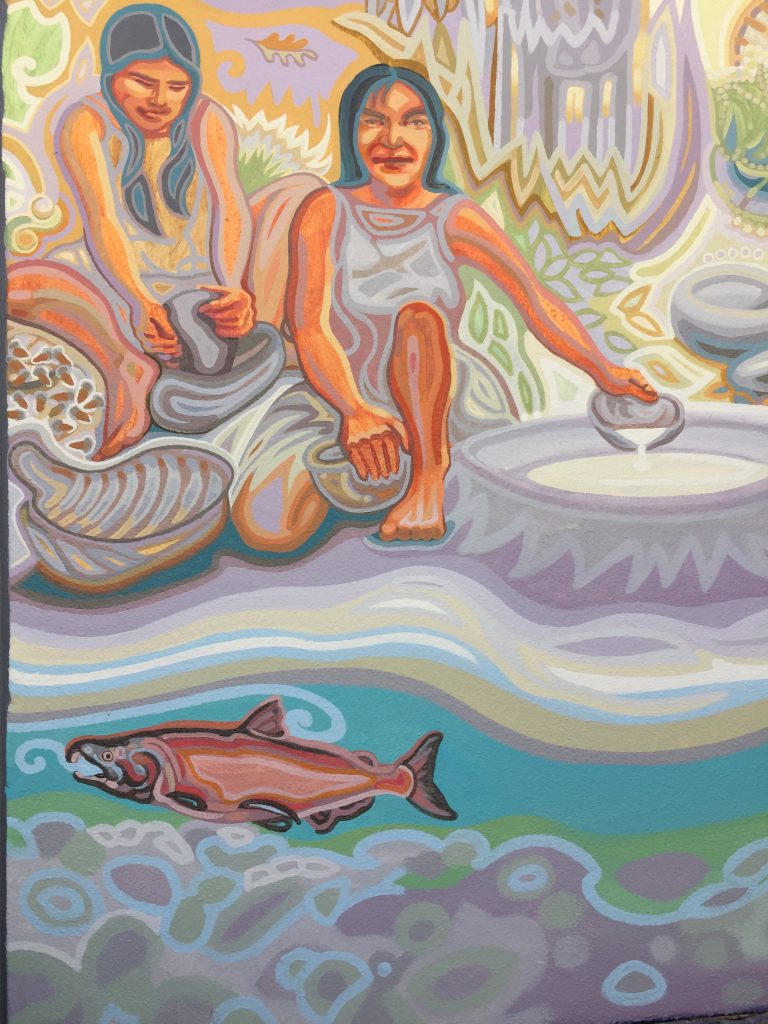
Indigenous people were hunter/gatherers. But they also used sophisticated land management techniques to support the game animals and edible plants they favored. Foremost among these was controlled burning, which prevented dense woodland from developing and gave rise to a more open environment with fresh plant growth that was nutritious food for deer, elk and other herbivores. When Europeans arrived on the shores of California, they were amazed at the sheer abundance of game.
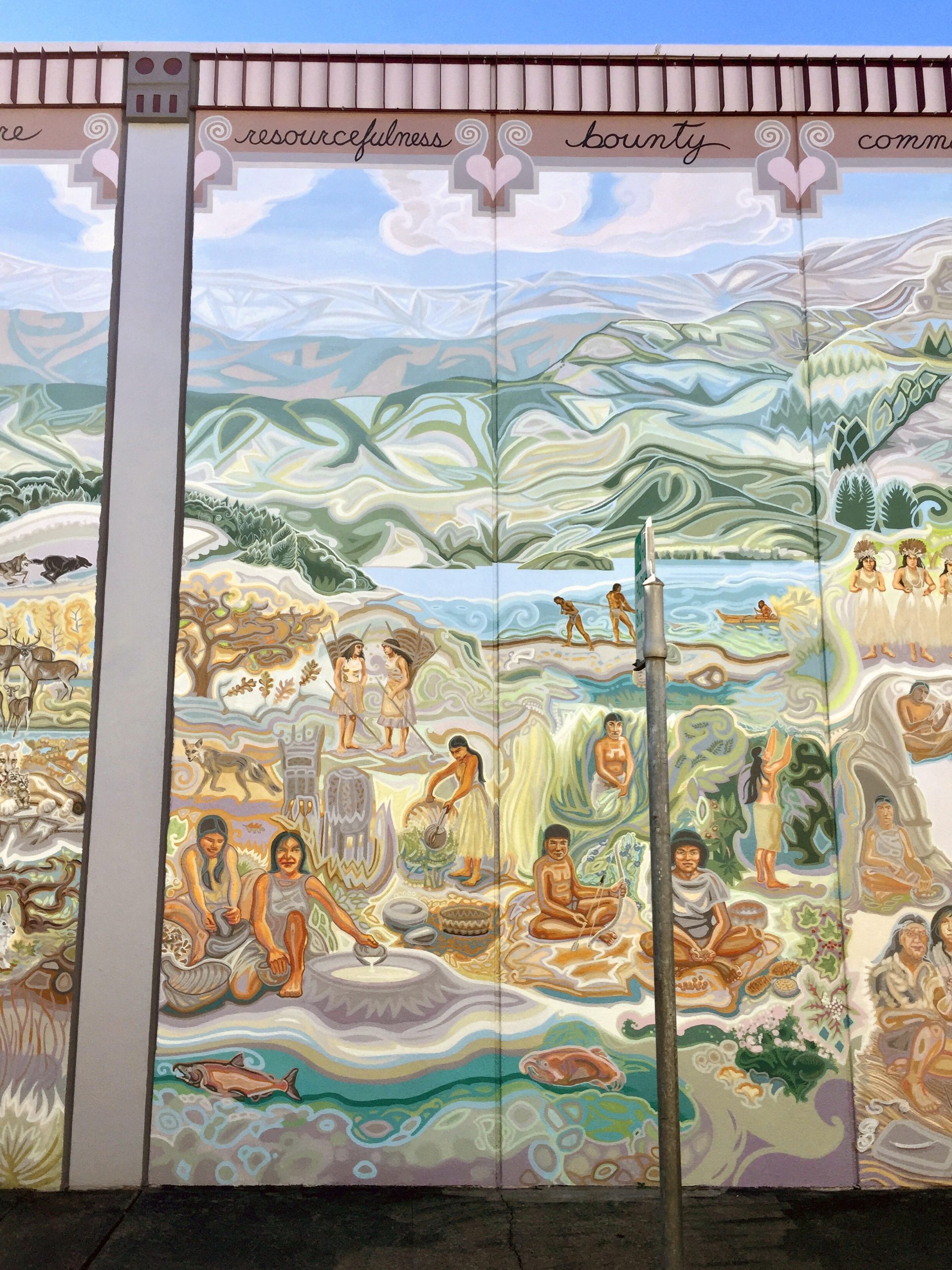
Find all the stories on the panel page:
panel 3 bounty
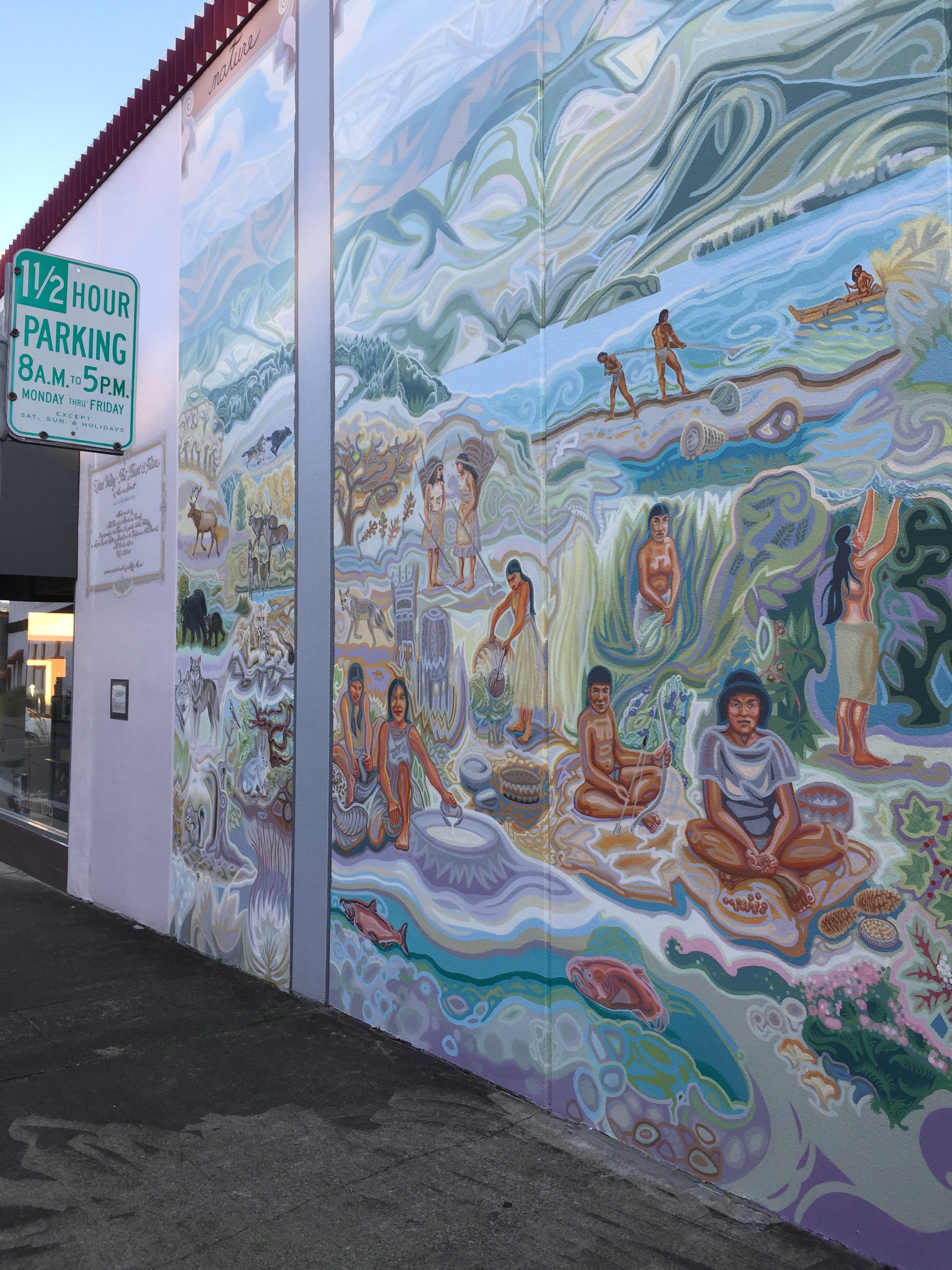
The seasonal abundance of inland Mendocino County was balanced by the wealth of our coastal environment, prolific salmon runs and the ability to preserve foods from both.
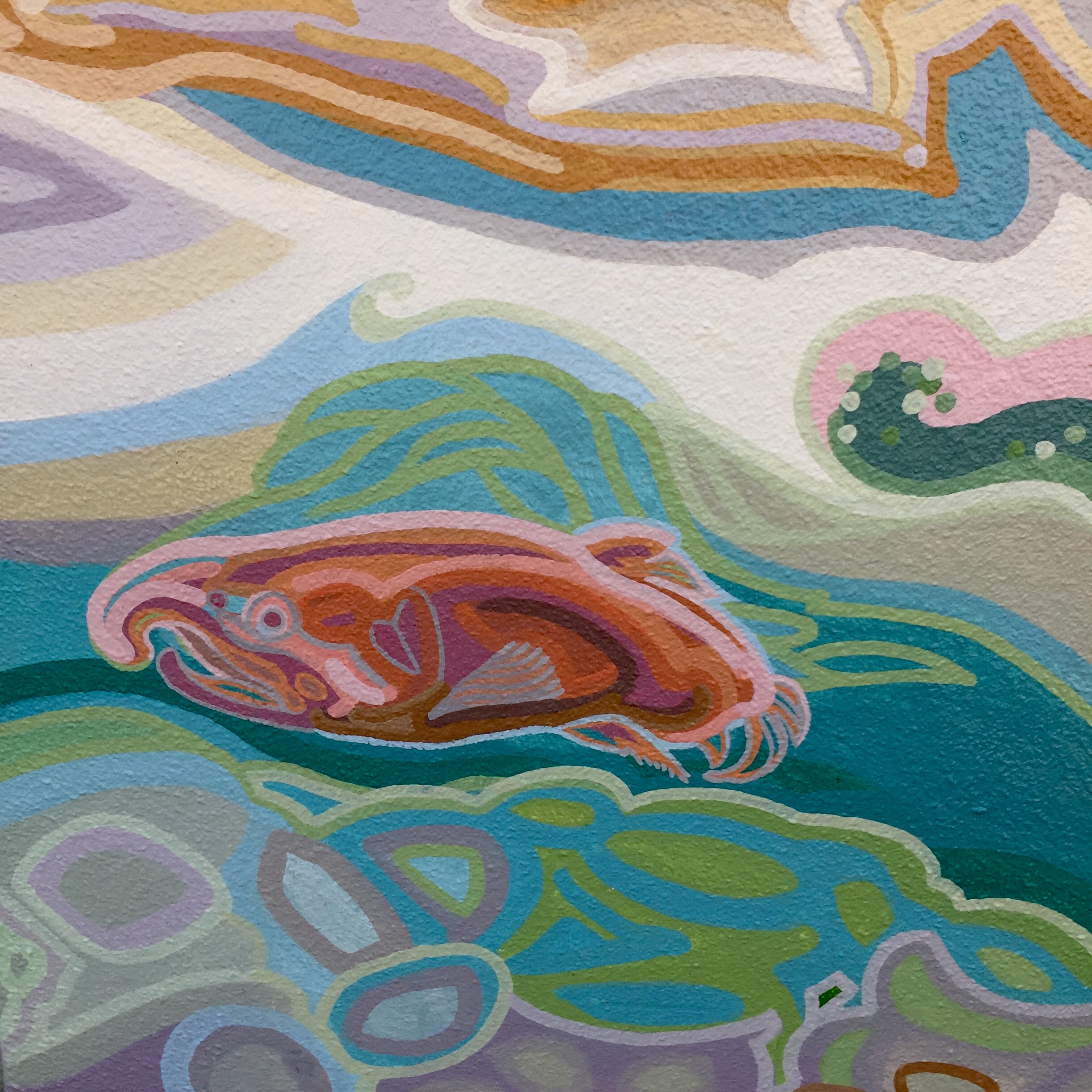
The Native inhabitants of our area were expert consumers of all of this bounty, and so another salmon appears!
Find all the stories on the panel page:

Bounty leads to community, which has 20 people!
I use source photos of Native people from the 1800s and early 1900s, so these are portraits, though almost always without a name. I hope to infuse their images with the life they once breathed, to try to connect with these individuals that I can never know.
panel 4 community
The Pomo and other native tribes lived sustainably and largely peaceably in small bands for thousands of years.
In fact, the territory we call California was a vast land whose natural bounty lent itself to the management techniques of its human inhabitants, giving rise to a large Native population of about 300,000.


California was possibly the most densely populated region north of Mexico in the years before Columbus arrived in the Western Hemisphere.
Ethnographers describe the Pomo as sedentary and affluent. In other words, so rich in resources that they didn’t need to migrate with herds.
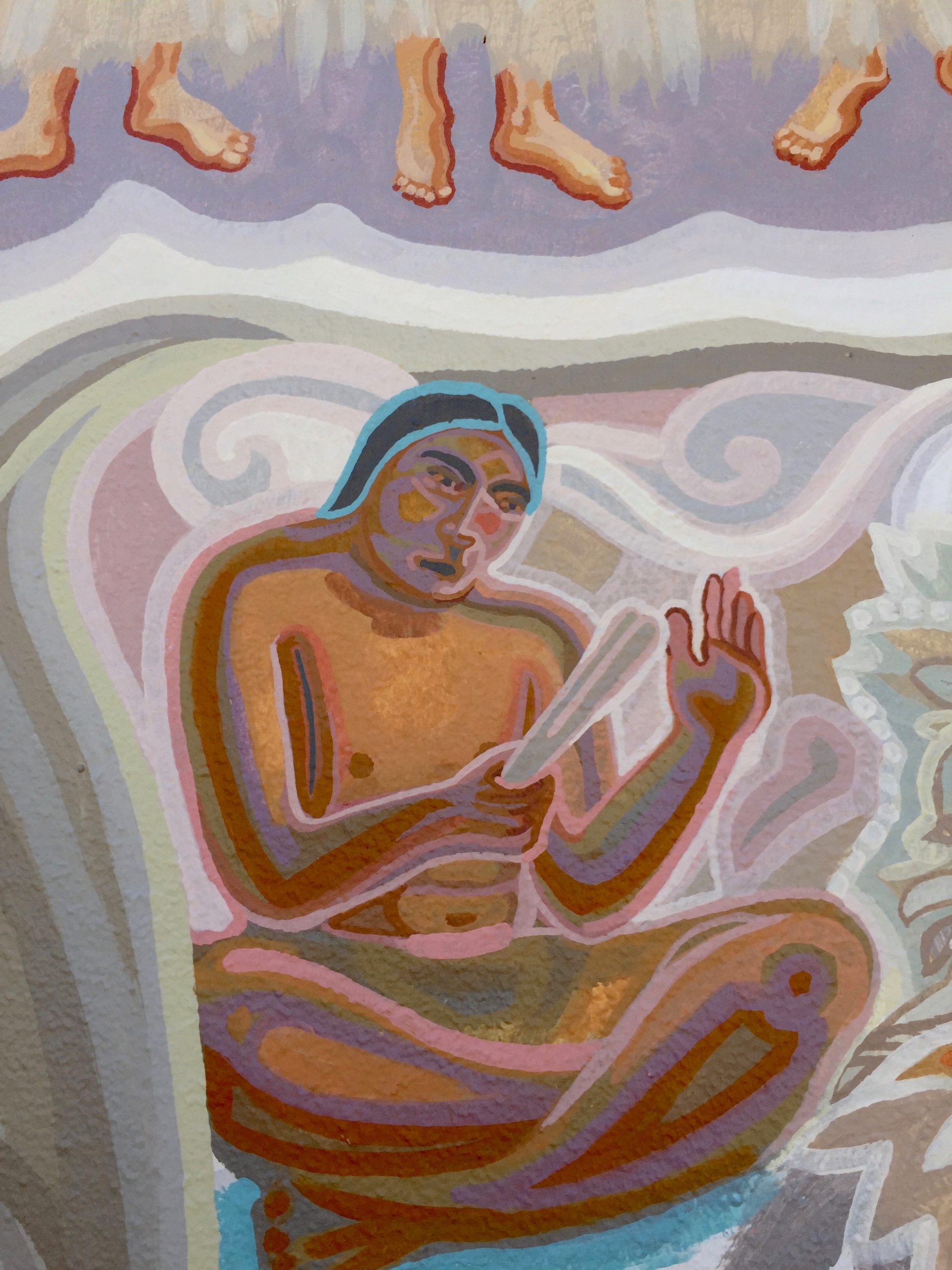
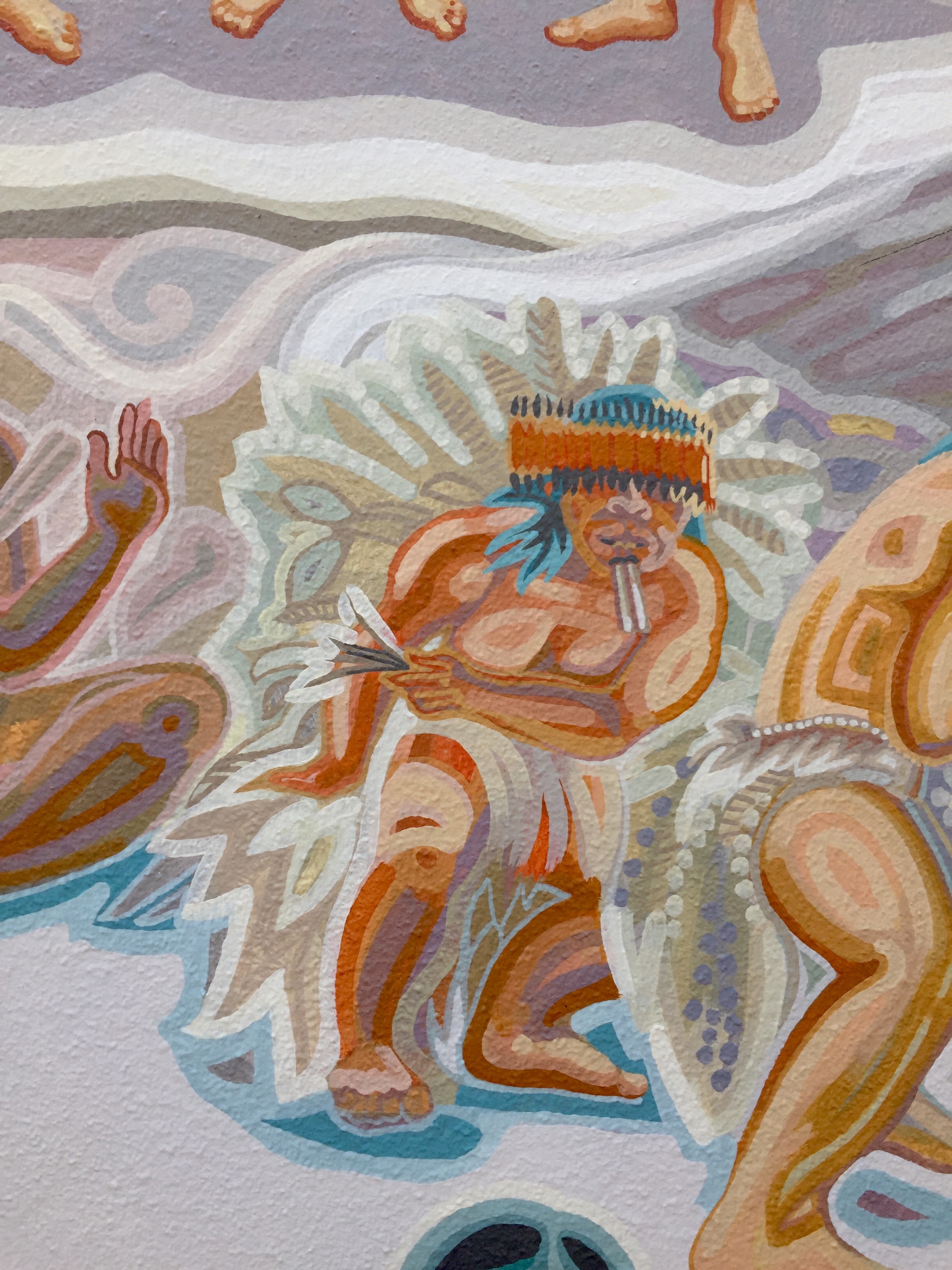
There was no better way to illustrate community than by the Native band, living and working together, delighting in their children, teaching them in all activities, honoring the wisdom and experience of elders, valuing generosity and the care of future generations.
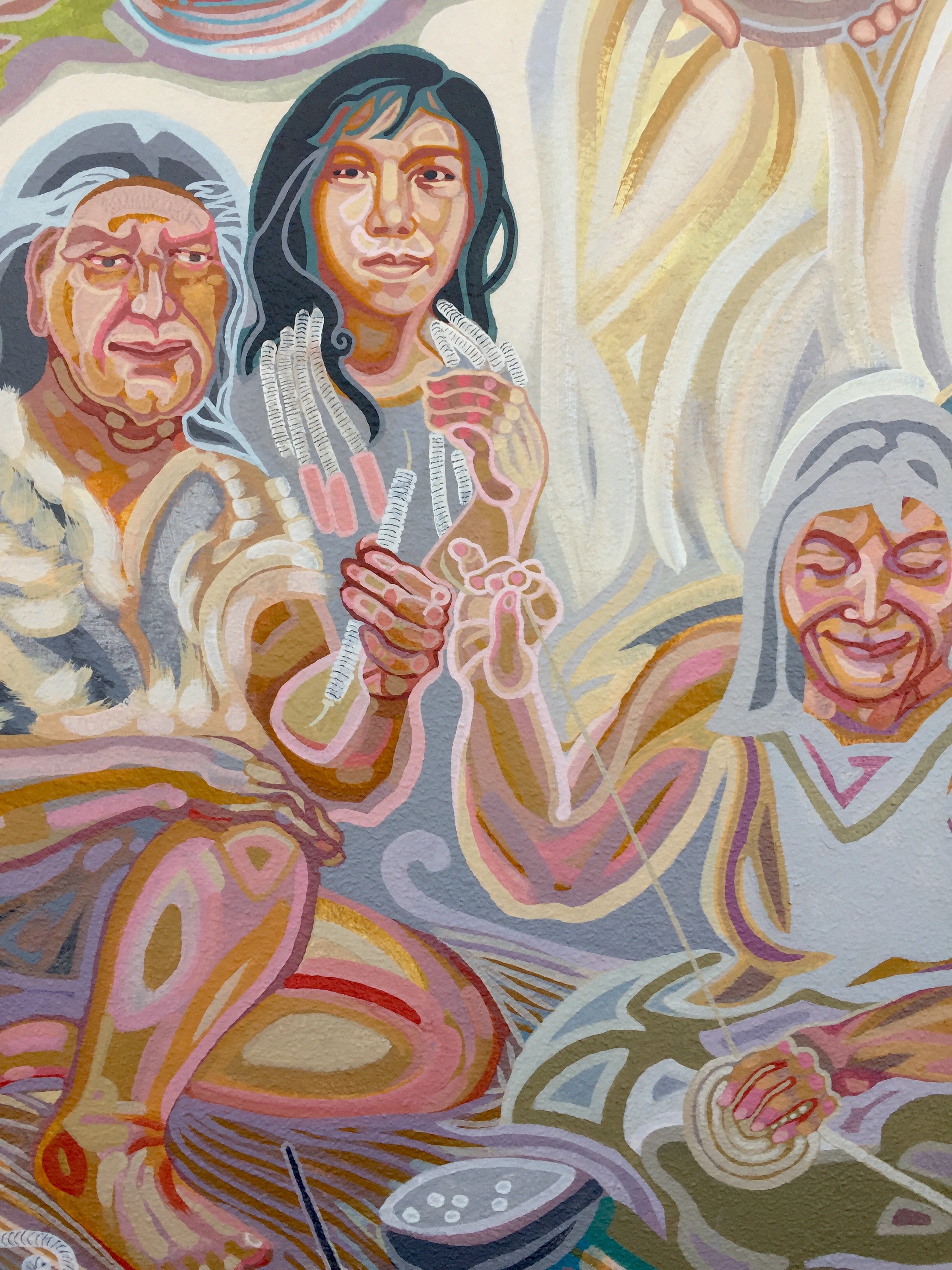
In the foreground I depict elders, parents and children, foods, dwellings, spiritual ceremony, and people having fun together.
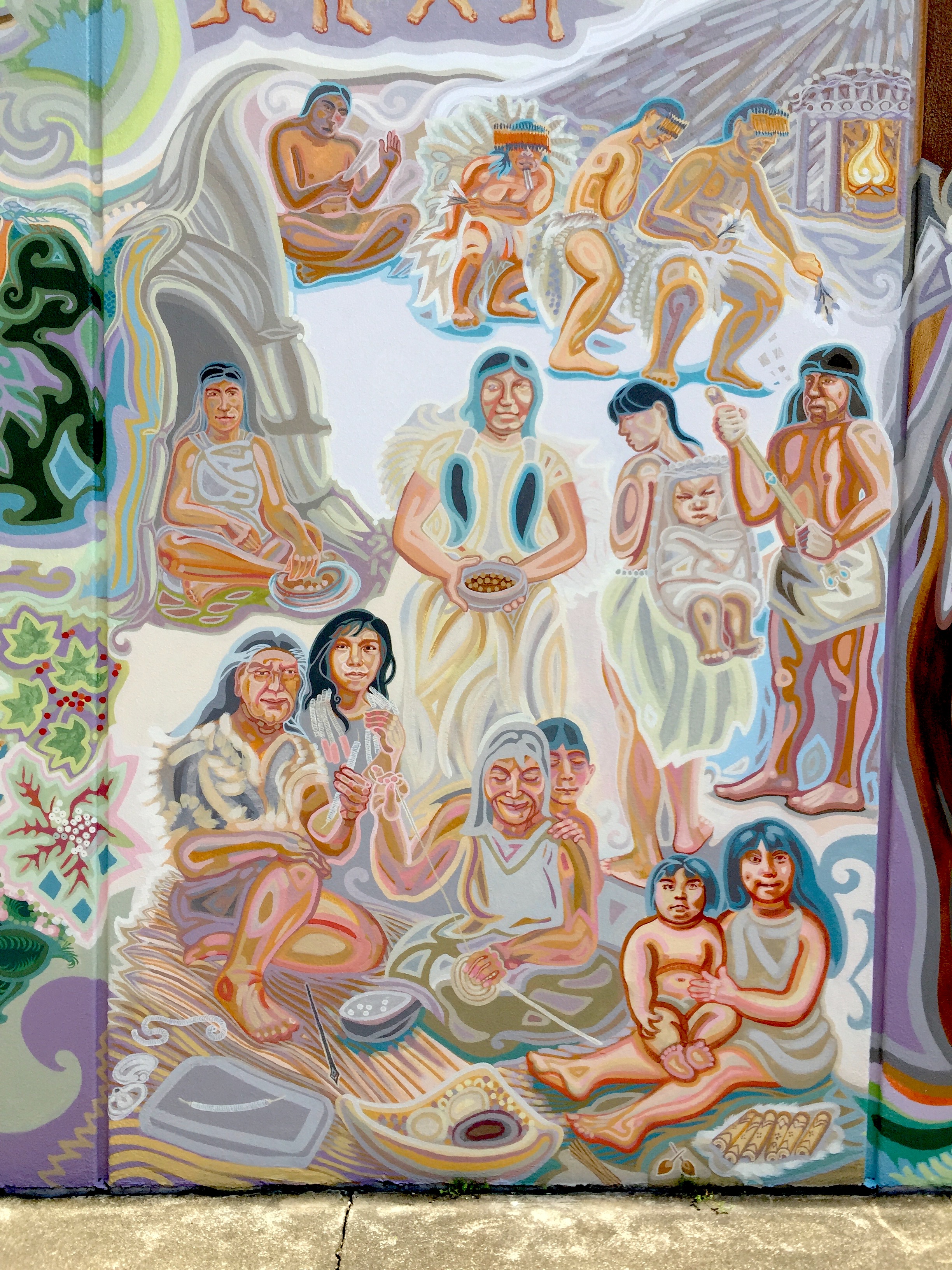
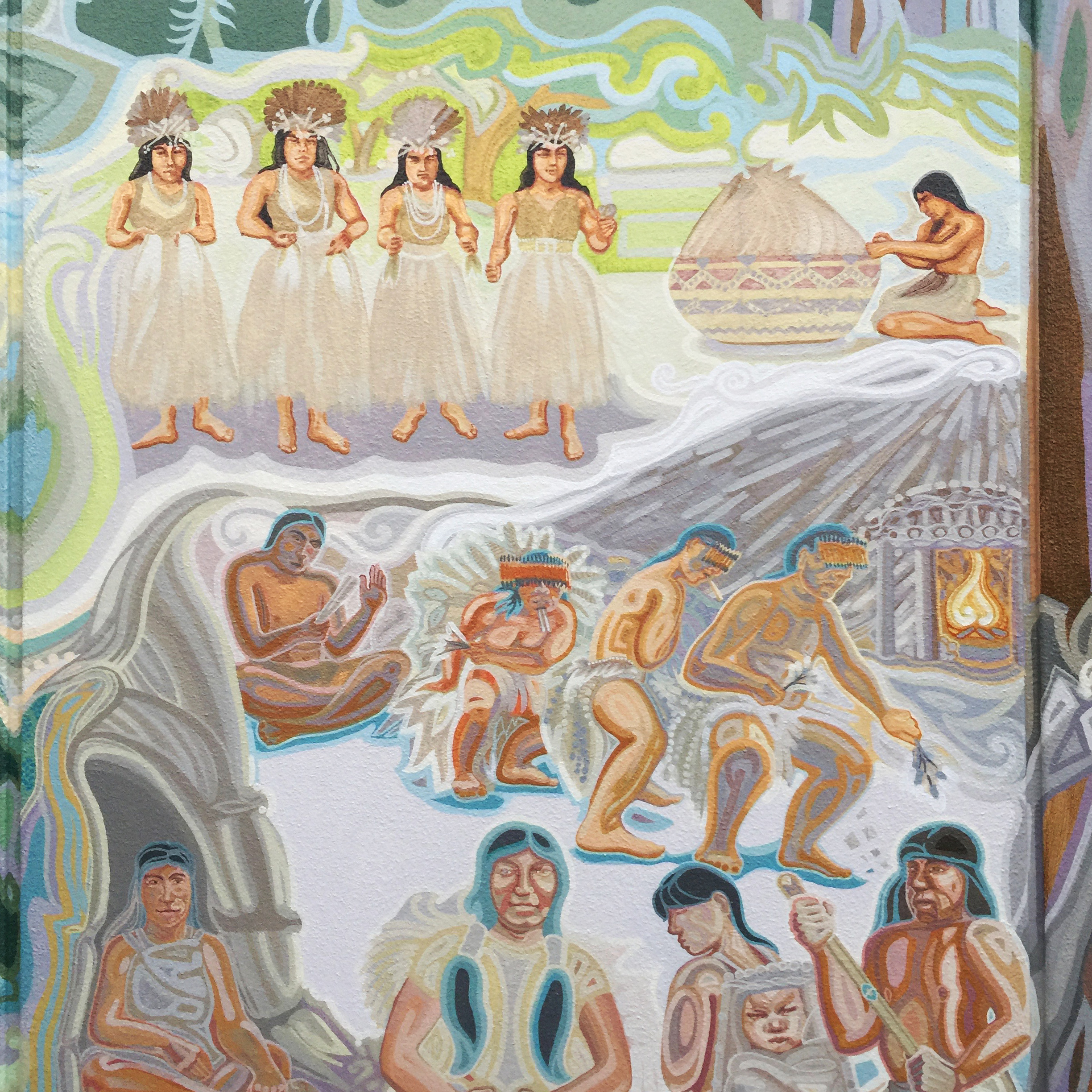
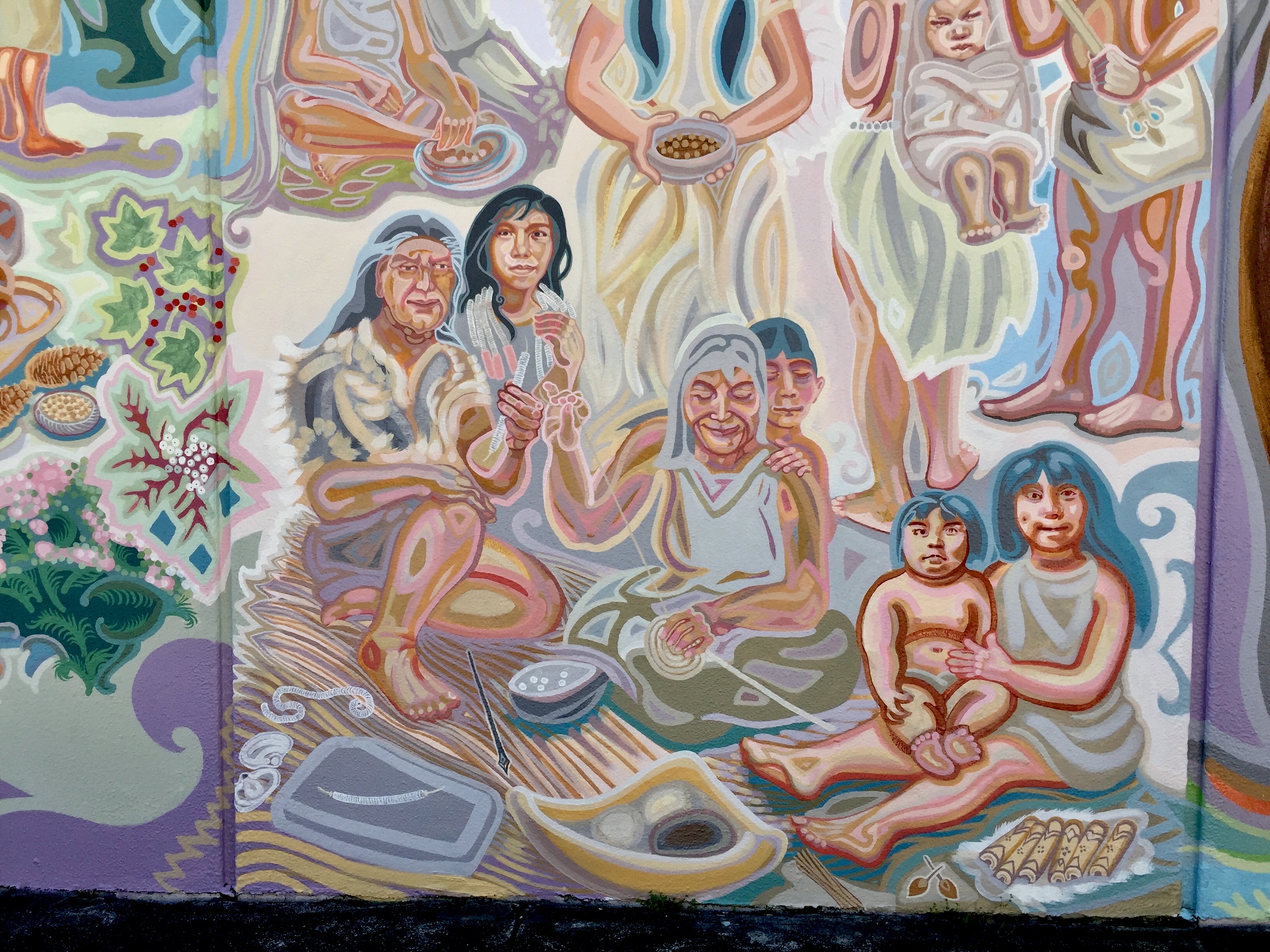
At the base of the panel figures include: an elder whose profession is money-making – he creates the small white clamshell beads that were Pomo currency – seen here with his tools; a young woman wearings strings of the money beads; an elder woman starting a coil basket, over whose shoulder a boy looks on affectionately; and two children – a young girl and her toddler brother, who have stick dice and acorn tops near them. At the bottom of the panel you see black and white acorn bread in a basket.
Find out who they all are on the panel page:
panel 5 majesty

Ancient Redwoods blanketed our region, fed by ocean fog, which they turn to rain that falls at their base. Redwoods can live 1,200 to 1,800 years, making them among the oldest living things.
The tallest tree on earth is a redwood (380 ft.). Trunk diameter can measure 30 ft. This is how the panel started.
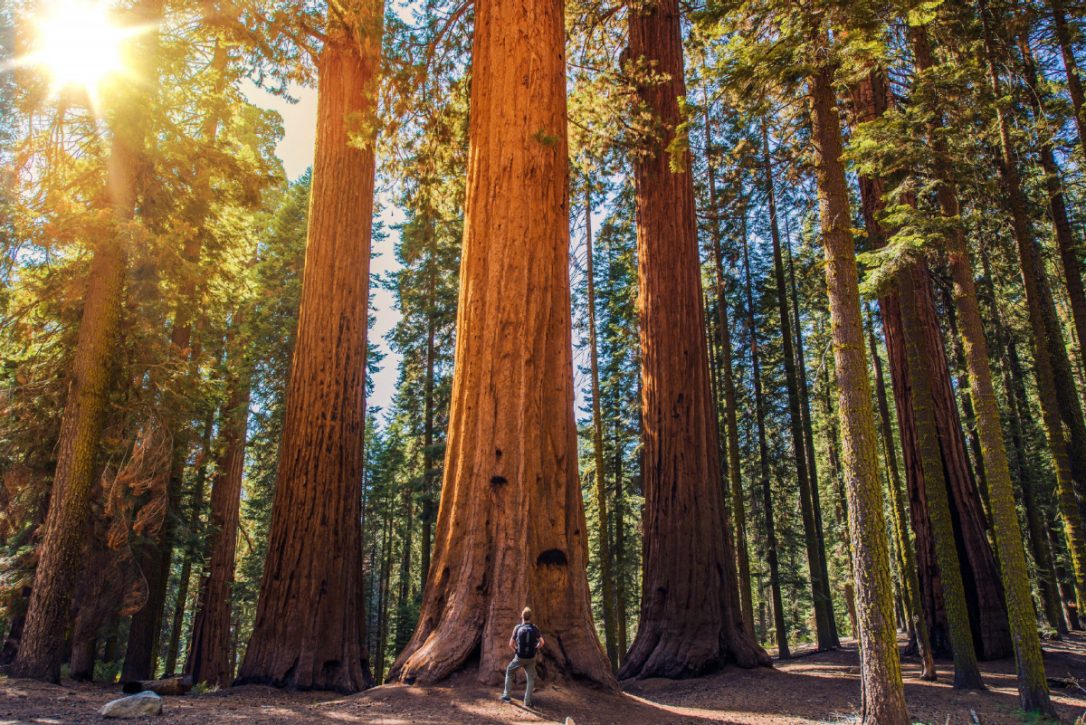

This is why I choose to paint these kingly trees up close, the way we experience them, as massive trunks whose tips we can’t even see.
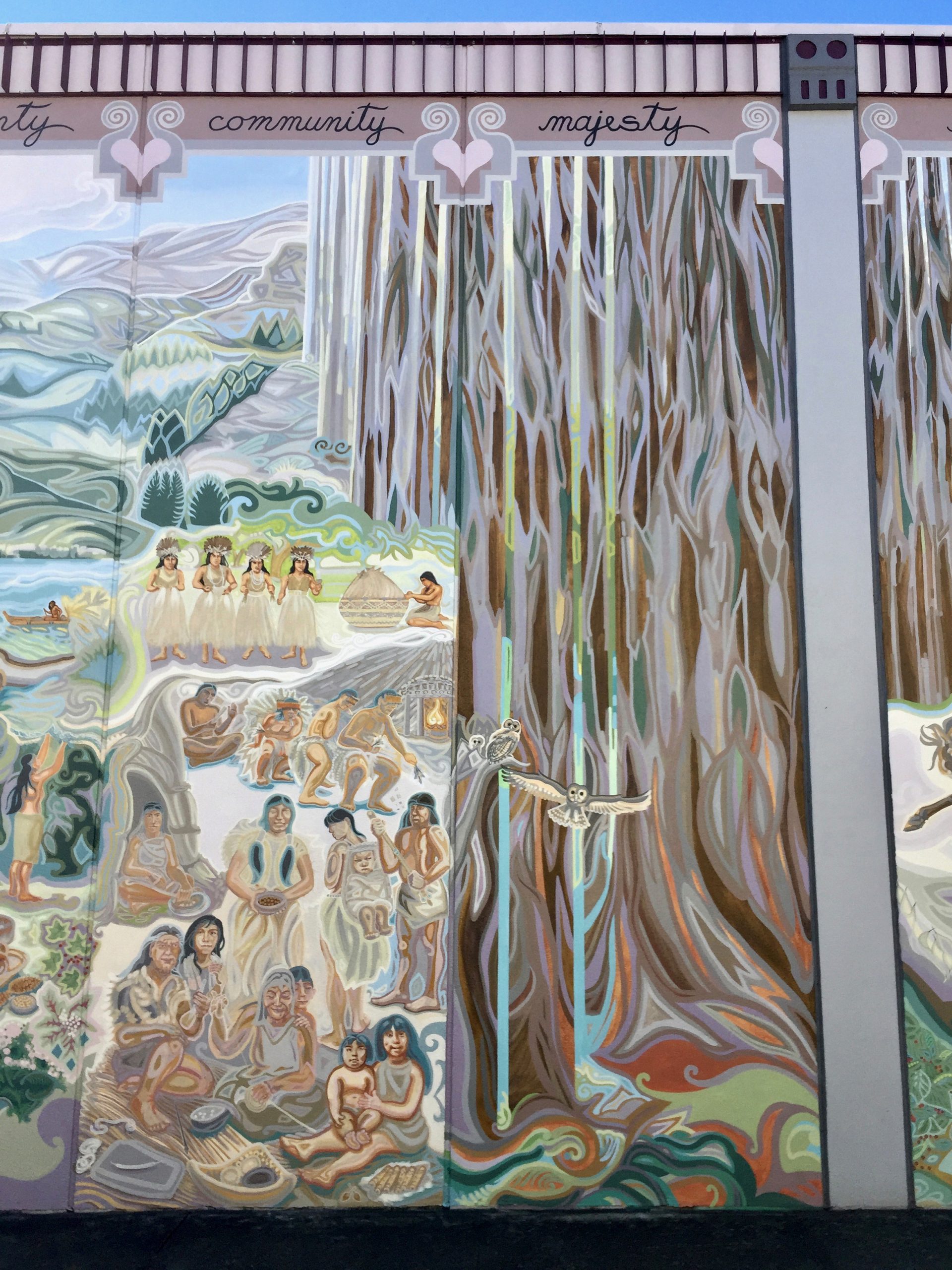
There is no better word than “majesty” to represent these forests, which define our region, both by their immensity and later, by their depletion, which would build San Francisco and feed the lumber boom that swelled the population of Ukiah in the 1900s.
Find all the stories on the panel page:
Next SECTION TWO